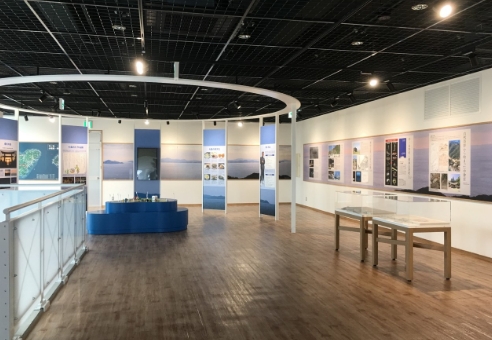
OkinoshimaOkitsu-miya, Munakata Taisha
The Sacred Island
Rituals heve been conducted a few times a year on Okinoshima after the ancient ritual sites. Shrine buildings of Okitsu-miya had been constructed by the middle of the 17th century, amidst the huge rocks where ancient rituals were performed.
The island of Okinoshima itself is the object within which the deity dwells. Therefore it is protected by strict taboos.
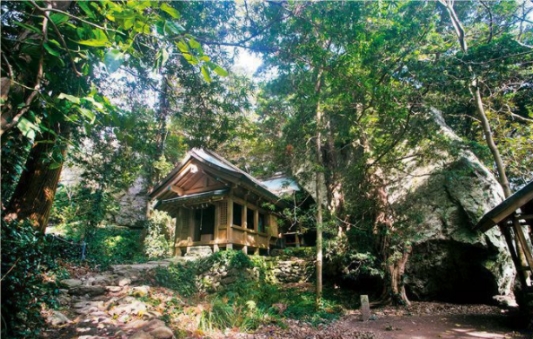
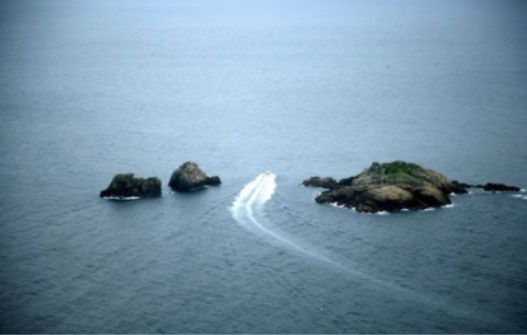
Today a Munakata Taisha priest stays on the island in full-time about ten-day shifts, offering a religious service each day at the shrine. Tagorihime-no-kami is enshrined there.
Worship of the Three Female Deities of Munakata emerged from the practice of nature worship on Okinoshima, and these two strands have coexisted ever since as the local religious traditions.
This property is unique in the world in the sense that the material evidence found there illuminates the process by which worship practices changed over time.
The three attendant reefs -Koyajima, Mikadobashira and Tenguiwa- are located one kilometer to the southeast and consistitute the Okitsu-miya shrine compound. In addition, these reefs have functioned as a natural torii, or shrine gate to Okitsu-miya.
Taboos on Okinoshima
- Vow of Silence
-
One must never speak a word about what one has seen or heard on Okinoshima. People even refrain from uttering its name, and respectfully refer to it instead in other ways, such as by calling it the “island whose name cannot be spoken.”
- No Removal of Objects
-
Removal of any object from Okinoshima is prohibited. According to legend, the breaking of this rule during the Edo period (17th century) brought about divine retribution. Thanks to this tradition, the ritual sites and treasures on the island have been preserved almost intact.
- Purification
-
No one can disembark on Okinoshima without permission from Munakata Taisha. Even the priest who offers a religious service there every day must purify his mind and body by immersing himself in the sea before he lands on the island.
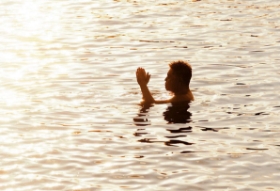
Purification
Okinoshima is not open
to the public.
Okinoshima is situated on private land owned by Munakata Taisha, and it is a criminal offence to visit the island without permission from the shrine.
Aside from emergency situations, all boats other than fishing vessels are asked to maintain a respectful distance from Okinoshima.
Shinto priests are stationed on the island, and security cameras are installed there as well.
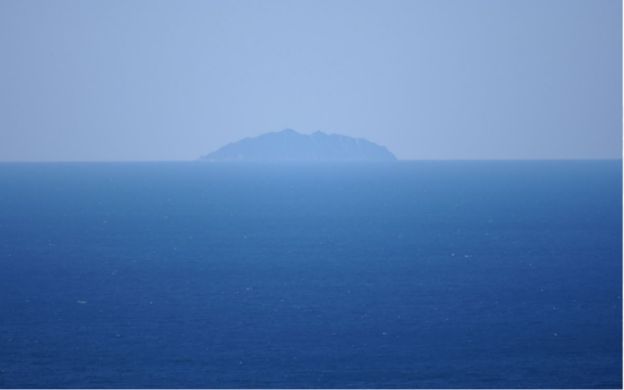
Fishermen protectors
The fishermen of Oshima are the ones who have preserved Okinoshima to this day.
For the fishermen of Oshima, Okinoshima has always been an abundant fishing ground. They present the largest fish of the catch as an offering to the deity at the shrine, and never fail to give thanks for the deity's protection each day.
It would be out of the question for them to take anything from the island. The fishermen have said they would refrain even from taking a pine branch that was floating in the ocean.
"From childhood we hear that you can be cursed if you do what is prohibited," one said, "or speak of anything that occurs there."
They believe that the sea that surrounds the island is a sacred precinct. It goes without saying that they express gratitude for the blessings they receive from this sacred maritime realm.
